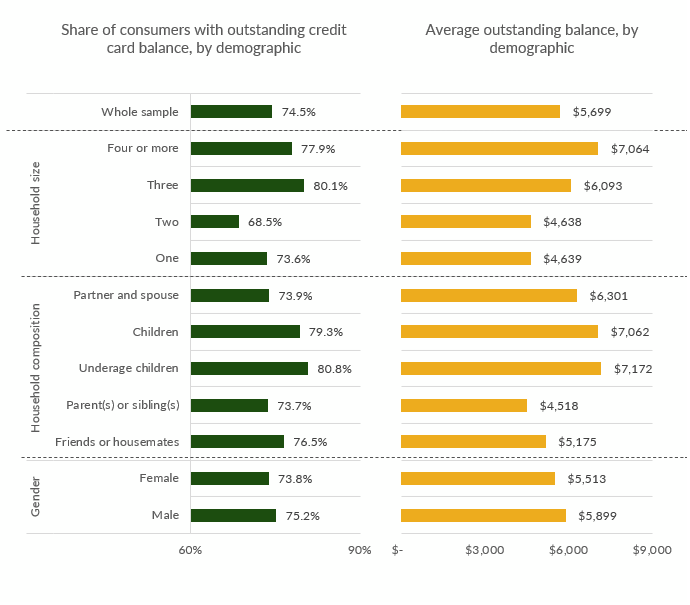The Parent Debt Trap: Parents’ Credit Card Balances 26% Higher Than Average

That having children is costly may not be surprising — but the extent to which parents with children depend on credit cards is. Proprietary research prepared for the July “New Reality Check: The Paycheck-to-Paycheck Report,” a PYMNTS collaboration with LendingClub, details which consumers are carrying credit card balances.
People who live in households of three or more are more likely than average to have outstanding credit card balances. Surprisingly, consumers who live in households with three members are the most likely of any household size to say they carry credit card balances, but their balances are only about 7% larger than average. However, as household size can include members of any age, looking at household composition is important to understanding the extent to which parents are going into credit card debt.

The share of consumers with children living at home who carry credit card balances was higher than other consumer segments. Eighty-one percent of those living with children under the age of 18 reported outstanding credit card balances, with 79% of consumers living with children of any age saying the same. These shares are 8.5% and 6.4% higher than average, respectively.
While parents with children at home are only slightly more likely than the average consumer to carry credit card balances, these parents tend to carry significantly higher balances. The average outstanding balances between these two consumer segments who live with their children are similar: Consumers with younger children at home have balances of $7,172, on average, and consumers with children of any age at home have balances of $7,062, on average. However, the credit card balances of consumers with children are as much as 26% higher than that carried by the average consumer.
And what is putting parents into debt? Like most consumers, parents have seen prices rise due to inflation. The costs of nearly every staple along a child’s development, from buying diapers to co-signing student loans, is causing a strain on these households’ finances. Fully or partially funding these extra expenses could be one driver behind parents’ higher than average credit card balances. The stretch is felt across generations parenting as well, be it millennials and adult members of Generation Z who may be raising young families or Generation X, possibly caught between raising children and supporting aging parents.
Of course, children are much more than a budgetary item. However, examining how much more debt raising a child could put a parent potentially into, help parents and the businesses catering them gain a deeper understanding of what drives these consumers’ financial lifestyles.

